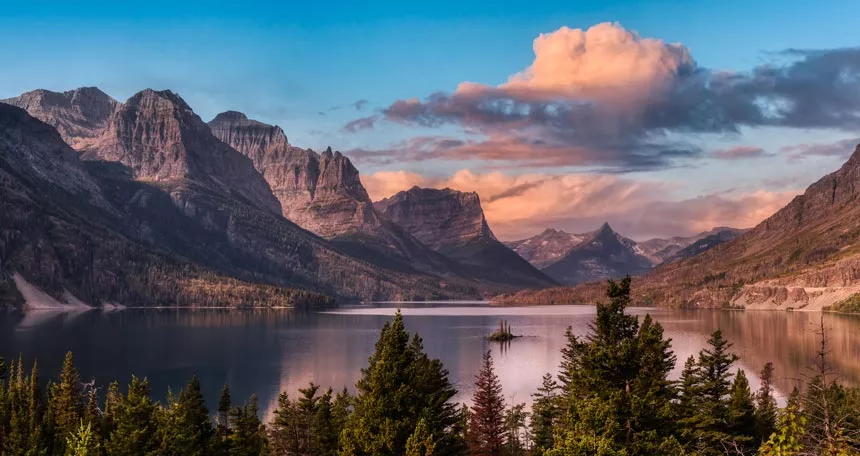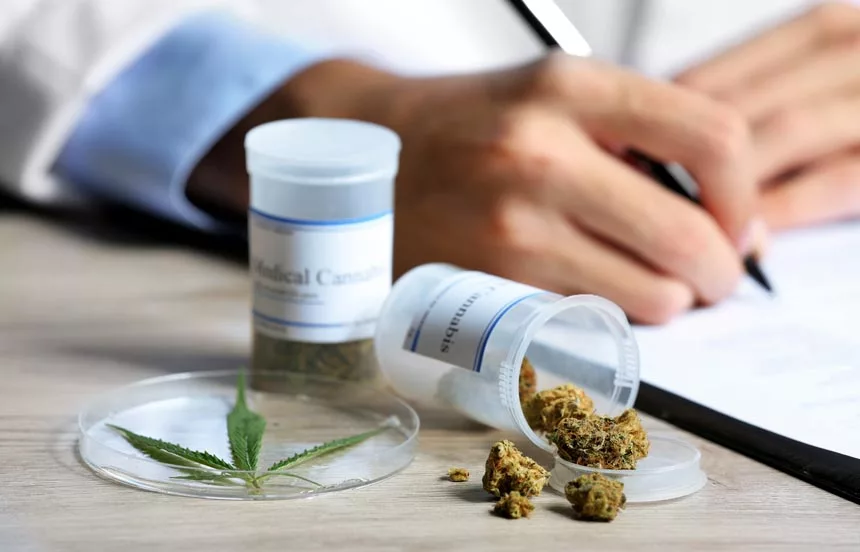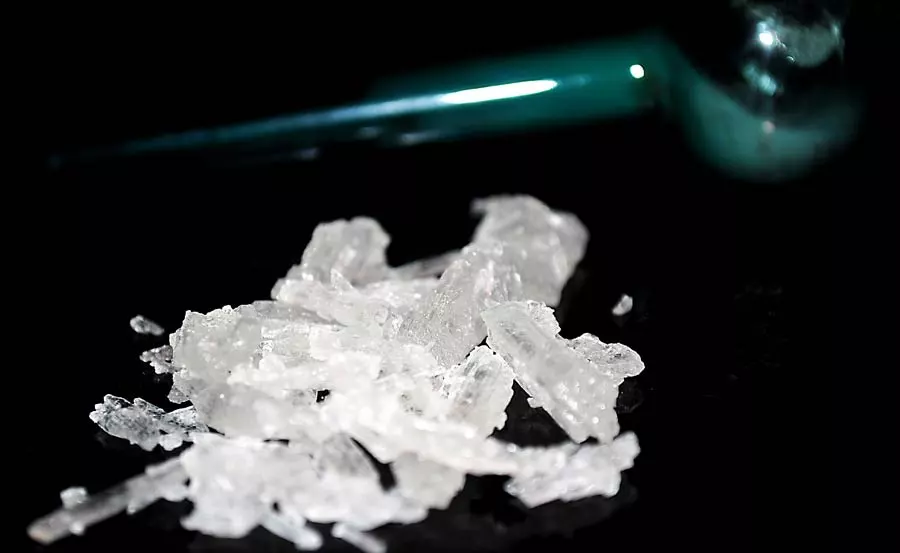Montana is known as “Big Sky Country” because its rolling plains provide an unimpeded view of the sky, although the moniker actually refers to the Rocky Mountain range in the state’s west. Its rugged geography supports numerous ski resorts and the greatest grizzly bear population in the lower 48 states.
Unfortunately, Montana, like other states, faces the issue of drug and alcohol addiction. Cocaine, ecstasy, and methamphetamine are the most often misused substances other than cannabis. The rise of addiction provides a clear need for effective Montana alcohol and drug rehab centers.
In a given year, approximately 204,000 Montana people – 19.19 percent of the state population – use drugs, and another 67,000 – 6.31 percent of the state population – abuse alcohol. As a result, Montana had a drug- and alcohol-related fatality rate of 20.09 percent between 2008 and 2017, more than seven percentage points higher than the national average of 12.71 percent.
During the same time period, the percentage of deaths caused by drugs and alcohol was much higher than the national average in two of Montana’s most populous communities. Missoula, Montana’s second most populous city, had a death rate of 19.12 percent, while Butte, Montana’s fifth most populated city, had a death rate of 21.20 percent.
This resource was created to assist residents of Montana battling with substance misuse and addiction in locating affordable treatment that will put them on the road to recovery. It is also meant to educate the public on the hazards of substance usage in Montana. Keep reading to find suitable assistance!
Montana Addiction Treatment
Table of Contents
- Montana Addiction Treatment
- Rehab: What to Expect
- What are the Types of Rehab in Montana
- How Much Does Rehab Cost in Montana
- Traveling to Montana for Rehab
- Traveling from Montana for Out of State Rehabs
- Montana Addiction Aftercare Programs
- Montana Drug Laws
- Find the Right Montana Alcohol and Drug Rehab Centers Now

The primary source of Montana’s drug supply is smuggled drugs from Canada. The complicated route layout of the state allows drug traffickers to conceal their activities while transporting drugs across state lines. The majority of drugs imported from Canada include crystal meth, cocaine, and heroin.
Furthermore, Montana’s rural and hilly geography, which includes national forests and grasslands, provides enough chance for traffickers to avoid detection while producing marijuana.
In Montana, there are two main methods marijuana is illegally grown:
- Indoor cultivation: Many in-state cultivators conceal their activities under Montana’s medicinal marijuana statute, which allows for up to six mature plants and 12 seedlings to be grown at home.
- Outdoor cultivation: This cultivation method became popular in 2010 as a result of activities on public lands controlled by Mexican drug trafficking cartels.
When marijuana is ready for sale, it is distributed at the retail level to citizens outside of restaurants, pubs, and even residences. Teens in Montana are especially vulnerable to the lure of marijuana experimentation. They normally want to try it once, but it quickly becomes a long-term cycle of misuse. In fact, Montana ranked ninth in the nation for teen marijuana use in 2012.
Rehab: What to Expect

Once you’ve picked your choice, had your initial consultation, and through your medical examination, you’re prepared to start the challenging path to recovery. The complexity of the detox phase, in which your body is rid of the substance, depends on a number of factors, and each client at a rehab facility is different.
Being in to rehab is challenging work, and you will be busy from dawn till dusk. The day can start with a communal breakfast before moving on to various one-on-one and group activities meant to support your recovery. Generally speaking, the detoxification period is more individualized, and after it is over, you will probably engage in more group activities than previously. It will depend on how comfortable you are.
Drug Rehabilitation Facilities in Montana: Outpatient vs. Inpatient
Choose between outpatient or inpatient drug treatment programs in Montana as one of your alternatives for reclaiming your health. There are benefits and drawbacks to choosing one option over the other, even though both provide you the assistance of our great staff.
There is no doubt that not everyone is a candidate for inpatient care. Long-term drug users can benefit from an inpatient program where they will be closely supervised.
The type of drug used and whether the addict has a mental health issue both have an impact on the decision. The client can benefit from staying at the treatment facility 24 hours a day, seven days a week so that the medications used during the detox period can be closely monitored.
Due to cost considerations, many people reject this option, but becoming healthy again is what matters most. Understanding which plan will best suit your needs is essential because drug and alcohol therapy is tough and each person is different.
What are the Types of Rehab in Montana

Patients are treated for substance abuse in either an inpatient or outpatient setting. The main distinction between the institutions is where the patient stays throughout therapy. However, before entering either institution type, a patient must first undergo detoxification. The addictive chemical is eliminated from the body throughout the detox process. The procedure can be excruciatingly painful and quite upsetting for the patient. It is an essential stage in preparing the mind and body for the lengthy recovery process.
Many institutions offer a medically supervised detox program to help alleviate some of the stress and suffering associated with detox. The patient is offered medicine and treatment to assist manage withdrawal symptoms in this type of program. After detox, the patient moves on to the next stage, which is long-term therapy. This phase targets the root of the addiction in order for the person to fully recover.
In an inpatient facility, patients live on-site. These facilities provide more intensive care, and patients have 24-hour access to medical staff. In contrast, the patient in an outpatient institution lives at home and attends counseling and therapy at the treatment center. This sort of care is more adaptable and ideal for patients with limited leave time or personal home responsibilities. Regardless of the institution type, both provide treatment to assist you in overcoming addiction.
Dual Diagnosis Treatment Centers in Montana
The term “co-occurring substance use and mental health disorders” refers to the frequent coexistence of substance abuse and mental health issues. The Substance Abuse and Mental Health Services Administration (SAMHSA) reports that in 2017, 18.3 percent of people with a mental health illness also had a substance use disorder, and 45.6% of those with a substance use disorder also had a mental health issue.
In 2017, 10.7% of adolescents with a major depressive episode also had a drug use disorder, compared to 35.9% of adolescents with substance use problems who also experienced a major depressive episode.
How Much Does Rehab Cost in Montana

One of the main reasons people do not seek therapy is the cost, yet not all programs are the same. Depending on the type, length, and location of the program you choose, as well as your insurance policy, the cost can range from free to hundreds of thousands of dollars. You have the option of selecting a private or luxury facility, as well as a typical outpatient therapy setting.
If you have insurance, your provider will most likely cover some, if not all, of your recovery program. If you’re not sure what your plan contains, contact your insurance company for further information. If you don’t have insurance, many treatment programs provide financial assistance, such as scholarships, payment plans, and sliding scales.
How to Pay for Rehab in Montana
Patients with health insurance prefer private institutions because of the variety of amenities, treatment alternatives, and low patient-to-staff ratios. If they qualify, uninsured individuals can receive free care in a state-funded clinic. Because of limited resources, state hospitals do not give as many amenities or treatment alternatives, but they do provide free therapy to low-income patients.
Here are numerous choices in Montana for low-income individuals to assist pay for therapy. Grants or assistance sponsored by the Substance Abuse and Mental Health Services Administration (SAMHSA), Medicare and Medicaid, the United States Department of Veterans Affairs, and The Affordable Care Act are just a few of the support programs available (ACA).
State-Funded Rehab & Private Rehab in Montana
Substance abuse treatment facilities are either private or state-funded. A private facility is ideal for those who have health insurance. A state facility is funded by the state government. These facilities frequently operate on a shoestring budget and do not provide as many services or amenities as a private clinic.
A client must go through a qualification process in order to receive treatment in a state-funded hospital. The patient is chosen based on the degree of their addiction and their income level. State institutions may not have as many amenities, but they are a feasible choice for uninsured or low-income individuals seeking competent and evidence-based care in order to overcome addiction.
Traveling to Montana for Rehab

Montana has a long history of gold, silver, and copper mining. Furthermore, a massive labor movement in the early 1900s resulted in martial law. Notable features of the city include approximately 4,000 historic buildings and a plethora of museums, including the Mineral Museum and the World Museum of Mining. Camping, fishing, and hunting are just a few of the activities available to outdoor enthusiasts. Every year, Butte holds the Montana Folk Festival, which features music ranging from country to Native American drumming.
Traveling from Montana for Out of State Rehabs
Although leaving home for rehab therapy may seem like a luxury that only a select few can afford, you should give it some thought. In the course of your recovery, removing yourself from situations that entice you might be really helpful. Even if you are a patient at a drug rehab center in Montana, it could be challenging to be so close to things and people that bring back bad memories of your addiction.
You may be able to focus more on improving your health once you realize you are no longer in that environment. However, before ruling out the prospect of finding a rehab treatment facility outside of town or another state, consider the benefits of doing so. Who is to say? You might find that an Florida treatment center gives you the room you need to recover, or that a California, Iowa, or even New Mexico rehab is the ideal choice for you.
Montana Addiction Aftercare Programs

Although it is a crucial step in the recovery process, substance abuse aftercare treatment is occasionally overlooked. People who try to carry on with their lives without receiving additional care in an aftercare setting greatly increase their risk of relapsing after rehab.
A variety of aftercare options are available for recovering addicts, including group therapy, follow-up sessions for ongoing therapy, and sober living facilities. Long-term participation in aftercare programs greatly enhances the success of rehabilitation efforts, according to study.
Montana’s 12-Step Addiction Meetings
There are now many 12-step groups for different addictions and disorders, with Narcotics Anonymous (NA) being only one example. Alcoholics Anonymous (AA) originated the 12-step technique for those recovering from alcohol addiction, but it has now been adopted by many other organizations.
Narcotics Anonymous (NA) Meetings
Narcotics Anonymous is similar to Alcoholics Anonymous in that it is for people who have a history of narcotics abuse. Meetings with NA are always free, accepting, and nonjudgmental. You’ll meet folks from many walks of life and levels of recovery at any given meeting. You might hear from someone who is just getting sober as well as someone who has been sober for decades.
Everyone has something to offer, and you may learn from their successes and failures. Many people prefer to work through the problem with a dedicated sponsor, someone who will be there for you through the ups and downs.
SMART Recovery Meetings

The SMART Healing program takes an unconventional approach to recovery. SMART Recovery stands for Self-Management and Recovery Training, and its goal is to provide you with the necessary tools and information to help you feel powerful and self-sufficient. Trained volunteers organize sessions and provide guidance and ongoing education to your organization.
SMART Recovery can teach you a wide range of abilities that you may use in a number of circumstances. Once you’ve mastered a skill, you’ll be able to utilize it in a variety of situations. The program encourages critical and analytical thinking, which aids in decision-making.
Factor that Contribute to Substance Abuse in Montana
When seeking to comprehend drug addiction concerns in a specific place, researchers and policymakers examine “key indicators.” They can offer profound insight into which substances represent the greatest risks and which populations are most affected by substance abuse when paired with usage information. The following discussion includes recent, reliable information and key indicators of Montana’s substance abuse problems.
Mental Illness in Montana

As was noted earlier in this article, there is a significant connection between substance use issues and mental health disorders. Co-occurring drug use and mental health disorders, also referred to as a “dual diagnosis,” are when a person experiences both of these issues at the same time. As a result, we may be able to gauge the level of substance use by looking at how common mental health issues are in a certain state.
Between the year 2017 and 2018, 5% percent of adults in Montana experienced a major mental illness, compared to the national rate of 4.6%. In Montana, 7.4% of people above the age of 18 experienced a major depressive episode in the previous year, which is slightly higher than the national prevalence of 7.1 percent.
Opioid Prescription Rate in Montana
The abuse of prescription drugs, particularly opioids, has reached epidemic levels in the United States. Although it is difficult to determine how many people use these drugs as prescribed and how many abuse them, the Centers for Disease Control and Prevention looked into the variations in opioid prescriptions across states and found a direct correlation between an amount of prescriptions and the risk of dependence and abuse.
In 2017, doctors in the US prescribed 191 million opioids. As a result, one in four people who begin taking long-term opioid prescription become addicted.
Due to the growth of the opioid epidemic and the recognition of the role that excessive opioid prescriptions have played in this pandemic, the opioid prescribing rate in the United States has been steadily dropping for several years after peaking in 2012. In the United States, the rate of opioid prescriptions decreased from 78.1 per 100 residents in 2013 to 58.7 per 100 residents in 2017, a decrease of 24.84 percent.
The opioid prescribing rate in Montana decreased from 84.2 per 100 residents in 2013 to 61.1 per 100 residents in 2017, a decrease of 27.43%, during that time period and remained consistently higher than the national prescribing rate.
Montana Drug Laws
In 2013 alone, law enforcement authorities in Montana arrested 2,556 people for drug and narcotics charges. A large number of these offenses involved the possession, sale, manufacturing, or cultivation of illegal narcotics. Over the past decade these numbers have risen dramatically.
In Montana, drug crimes often result in less prison time but extremely substantial fines. If the offence is for possession and it is a first offense, the offender may be sentenced to probation rather than being sentenced immediately. This judgment is solely at the discretion of the judge.
Medical Marijuana Regulations in Montana

Montana’s medicinal marijuana statute, adopted in 2004, allows patients to possess up to four mature plants and one ounce of marijuana. The medical conditions listed below qualify a patient for a medical marijuana prescription.:
- Chronic pain
- Cancer
- Cachexia or wasting syndrome
- Crohn’s disease
- HIV Glaucoma
- AIDS
- Seizures
- Nausea
- Severe or persistent muscle spasms
The state approved legislation in 2011 prohibiting state dispensaries from dispensing marijuana to more than three registered patients. The rule also limits a physician’s ability to prescribe marijuana to 25 individuals each year.
Addiction Treatment Laws In Montana
Montana officials know that addressing addiction treatment requires a holistic approach centered on getting every individual into treatment and preventing future addictions from forming. One method the state is assisting residents is by enacting harm reduction legislation. Harm reduction legislation encompasses policies, programs, and educational activities aimed at lowering the hazards of drug abuse.
What is the Montana Meth Project?

Montana has among the highest rates of methamphetamine usage in the country. While meth addiction can wreak havoc on a person’s health, it can also wreak havoc on their closest relationships. In 2005, it was reported that more than 53% of children in foster care were there because a parent had a crippling meth addiction.
The Montana Meth Project is a large-scale preventative effort that aims to drastically reduce the consequences of methamphetamine consumption.
The program, which began in Montana in 2005, includes research-based outreach and public policy measures that educate people about the hazards of meth. It also targets kids who are thinking of taking meth for the first time with a series of online, social media and television PSAs. Teen meth use in Montana has decreased by 63 percent since the program’s inception.
Montana Prescription Drug Registry (MPDR)
Many states across the US have their own prescription monitoring programs that track the quantity of prescriptions issued to individuals. The Montana Prescription Drug Registry (MPDR) was formed in 2012 to assist prescribers in not just identifying potential drug misuse in the state, but also in improving a patient’s quality of treatment.
Prescription drug monitoring schemes work by giving doctors access to their patients’ prescription medication history. Prescribers can then assess whether a patient has a history of drug misuse.
Montana’s drug monitoring program is unique in that it permits persons other than physicians and pharmacists to access the database:
- Law enforcement officers that need to subpoena drug information in connection with an ongoing investigation.
- Emergency medical personnel who must determine the sort of substances consumed by an unresponsive patient.
- Anyone who wants a copy of their own drug prescription history.
Health care providers in Montana are encouraged to use the MPDR to assess a patient’s medication history. This enables them to develop efficient treatment plans that keep patients administered restricted substances safe.
Montana (Rocky Mountain) High-Intensity Drug Trafficking Area
width="100%" height="550" frameborder="0" allowfullscreen="allowfullscreen">
Several areas in the United States participate in the High-Intensity Drug Trafficking Area (HIDTA) Program. They are part of a national effort to track drug trafficking attempts in high-risk locations across the country.
The Rocky Mountain High-Intensity Drug Trafficking Area (HIDTA) is made up of 34 counties spread over four states, including Montana.
Montana’s large highway network and closeness to Canada make it an attractive location for drug traffickers to move drugs both within and beyond state lines. The Rocky Mountain HIDTA offers Montana law enforcement officials with criminal interdiction training and an information-sharing system to combat drug traffickers. They can then communicate with other Rocky Mountain HIDTA states to maintain track of open drug trafficking cases.
Find the Right Montana Alcohol and Drug Rehab Centers Now
Substance abuse treatment is accessible in Montana for everyone who needs assistance in overcoming an addiction; you do not have to suffer alone. You can also utilize the information mentioned previously in this guide to give you an idea of what to expect.
If you are addicted to drugs or alcohol, it will have ongoing negative impacts on you and your loved ones. Reaching out for help and seeking treatment can be a vital first step toward making a positive change in your life; yet, you may not know where to look for Montana rehab centers.
Please get in touch with us right away if you or a loved one needs help with an addiction. Find Addiction Rehabs can help you find the best drug rehab or alcohol rehab facility in Minnesota for your specific needs.
Contact our dedicated rehab representatives to take a break from the struggle. Every call to Find Addiction Rehabs is confidential and can be truly life-changing, so reach out now!

